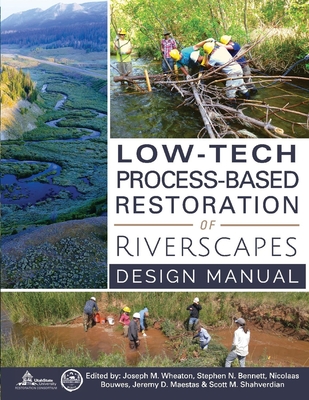Low-Tech Process-Based Restoration of Riverscapes: Design Manualvolume 1

Low-Tech Process-Based Restoration of Riverscapes: Design Manualvolume 1
Stream and riverine landscapes or riverscapes are made up of a series of interconnected floodplain, groundwater, channel habitats, and their associated biotic communities that are maintained by physical and biological processes that vary across spatial and temporal scales. An over-arching goal of riverscape restoration and conservation is to improve the health of as many miles as possible, while ensuring those systems achieve and maintain their potential in self-sustaining ways. This design manual is intended to help the restoration community more efficiently maximize efforts to initiate self-sustaining recovery of degraded riverscapes at meaningful scales. Structural-starvation of wood and beaver dams in riverscapes is one of the most common impairments affecting riverscape health. At a basic level, a riverscape starved of structure drains too quickly and efficiently, lacks connectivity with its floodplain and has simpler more homogenous habitat. By contrast, a riverscape system with an appropriate amount of structure provides obstructions to flow. What follows in the wake of structurally-forced hydraulic diversity are more complicated geomorphic processes that result in far more diverse habitat, resilience, and a rich suite of associated ecosystem services. The purpose of this design manual is to provide restoration practitioners with guidelines for implementing a subset of low-tech tools--namely post-assisted log structures (PALS) and beaver dam analogues (BDAs)--for initiating process-based restoration in structurally-starved riverscapes. While the concept of process-based restoration in riverscapes has been advocated for at least two decades, details and specific examples on how to implement it remain sparse. Here, we describe 'low-tech process-based restoration' as a practice of using simple, low unit-cost, structural additions (e.g., wood and beaver dams) to riverscapes to mimic functions and initiate specific processes. Hallmarks of this approach include: - An explicit focus on the processes that a low-tech restoration intervention is meant to promote- A conscious effort to use cost-effective, low-tech treatments (e.g., hand-built, natural materials, non-engineered, short-term design life-spans) - 'Letting the system do the work', which defers critical decision making to riverscapes and nature's ecosystem engineersImportantly, the manual conveys underlying principles guiding use of low-tech tools in process-based restoration in systems impaired
PRP: 372.00 Lei
Acesta este Prețul Recomandat de Producător. Prețul de vânzare al produsului este afișat mai jos.
334.80Lei
334.80Lei
372.00 LeiLivrare in 2-4 saptamani
Descrierea produsului
Stream and riverine landscapes or riverscapes are made up of a series of interconnected floodplain, groundwater, channel habitats, and their associated biotic communities that are maintained by physical and biological processes that vary across spatial and temporal scales. An over-arching goal of riverscape restoration and conservation is to improve the health of as many miles as possible, while ensuring those systems achieve and maintain their potential in self-sustaining ways. This design manual is intended to help the restoration community more efficiently maximize efforts to initiate self-sustaining recovery of degraded riverscapes at meaningful scales. Structural-starvation of wood and beaver dams in riverscapes is one of the most common impairments affecting riverscape health. At a basic level, a riverscape starved of structure drains too quickly and efficiently, lacks connectivity with its floodplain and has simpler more homogenous habitat. By contrast, a riverscape system with an appropriate amount of structure provides obstructions to flow. What follows in the wake of structurally-forced hydraulic diversity are more complicated geomorphic processes that result in far more diverse habitat, resilience, and a rich suite of associated ecosystem services. The purpose of this design manual is to provide restoration practitioners with guidelines for implementing a subset of low-tech tools--namely post-assisted log structures (PALS) and beaver dam analogues (BDAs)--for initiating process-based restoration in structurally-starved riverscapes. While the concept of process-based restoration in riverscapes has been advocated for at least two decades, details and specific examples on how to implement it remain sparse. Here, we describe 'low-tech process-based restoration' as a practice of using simple, low unit-cost, structural additions (e.g., wood and beaver dams) to riverscapes to mimic functions and initiate specific processes. Hallmarks of this approach include: - An explicit focus on the processes that a low-tech restoration intervention is meant to promote- A conscious effort to use cost-effective, low-tech treatments (e.g., hand-built, natural materials, non-engineered, short-term design life-spans) - 'Letting the system do the work', which defers critical decision making to riverscapes and nature's ecosystem engineersImportantly, the manual conveys underlying principles guiding use of low-tech tools in process-based restoration in systems impaired
Detaliile produsului









